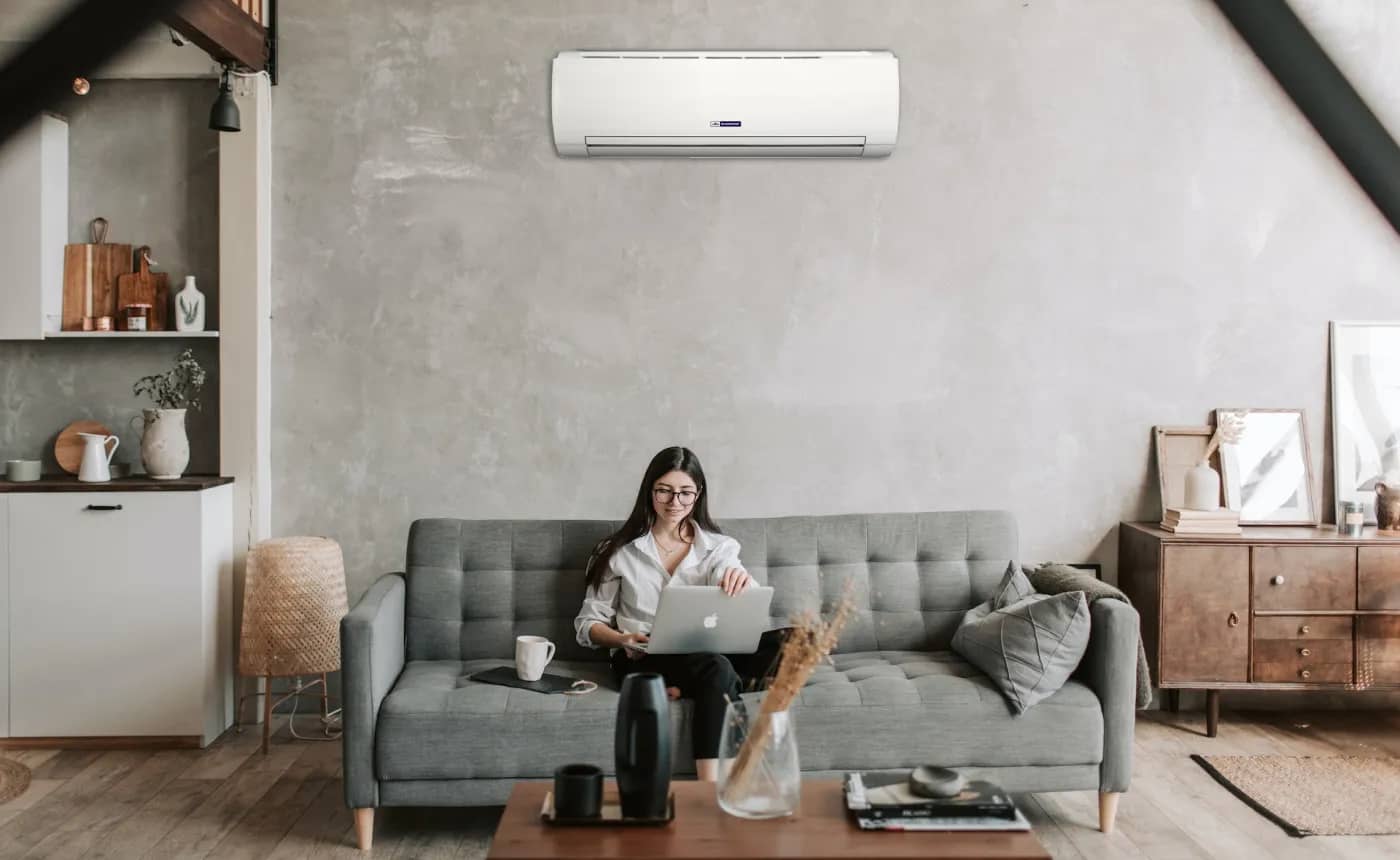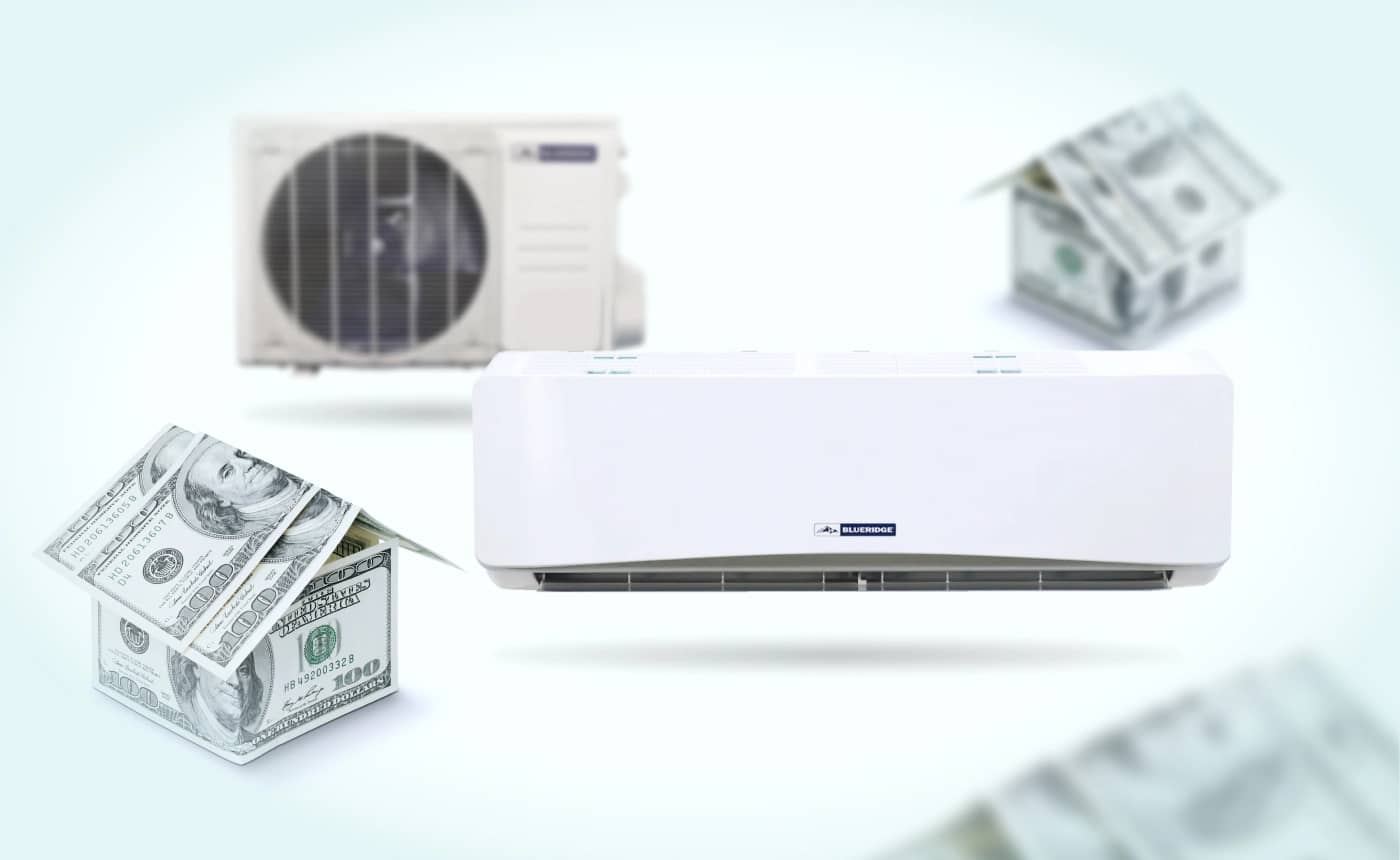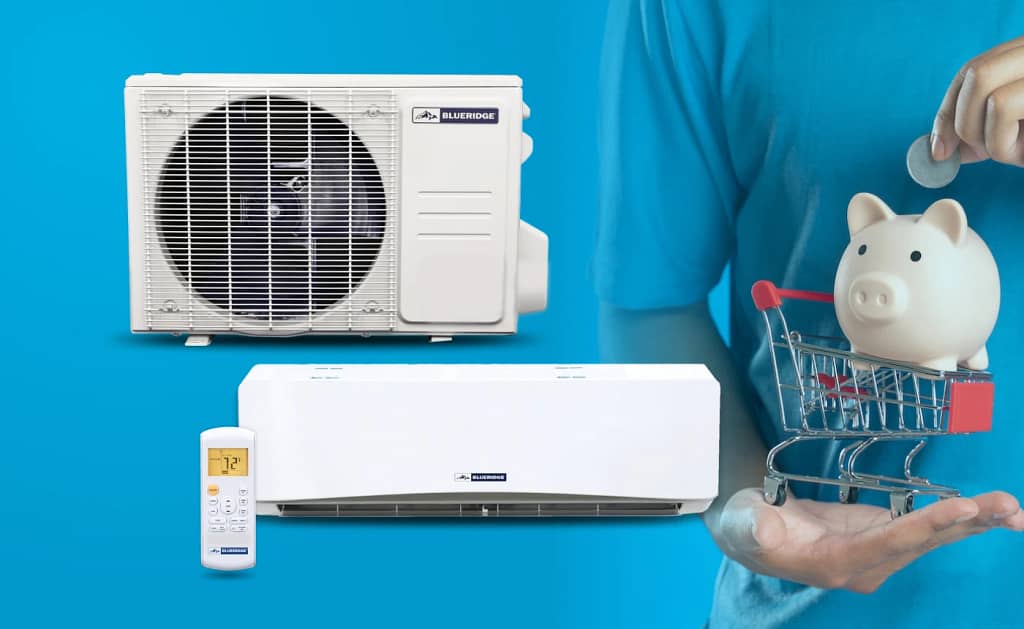
Whenever we consider a home improvement project, knowing the costs associated with installation is a crucial part of decision-making. And knowing the cost to install a single-zone ductless mini-split system is no exception.
KEY TAKEAWAYS
- Knowing a single-zone mini-split’s various and variable installation costs will be important to your decision-making process.
- Ongoing operational costs, such as energy bills, maintenance, and potential repairs, are also important.
- Choosing a mini-split air conditioner from the right HVAC company can greatly improve your overall satisfaction and cost savings.
Whether considering a DIY approach to your ductless mini-split installation or hiring a professional, you should be well-informed. Expenses, equipment, and other factors can influence the type of system you purchase and your installation route.
Let’s look at the financial aspects of installing a single-zone mini-split to ensure a clear picture of what to expect.
Basics of Single-Zone Mini-Split Systems
Before diving into the costs, let’s briefly define a single-zone mini-split heat pump and discuss why correct sizing matters.

Ductless mini-splits provide heating and cooling to a single area or room, replacing central AC systems of the past.
A single zone mini split AC system comprises two units, the outdoor unit and the indoor unit.
Outdoor Unit: The condenser or heat pump is typically installed on an exterior wall or a concrete pad near the area you want to cool or heat.
This unit is responsible for releasing or absorbing heat from the environment, depending on whether you’re using it for cooling or heating.
The compressor, condenser coil, and fan are inside the outdoor unit. The compressor plays a crucial role in pressurizing and circulating the refrigerant. The condenser coil helps dissipate heat generated during the compression process. The fan assists in transferring heat from the refrigerant to the outdoor air.
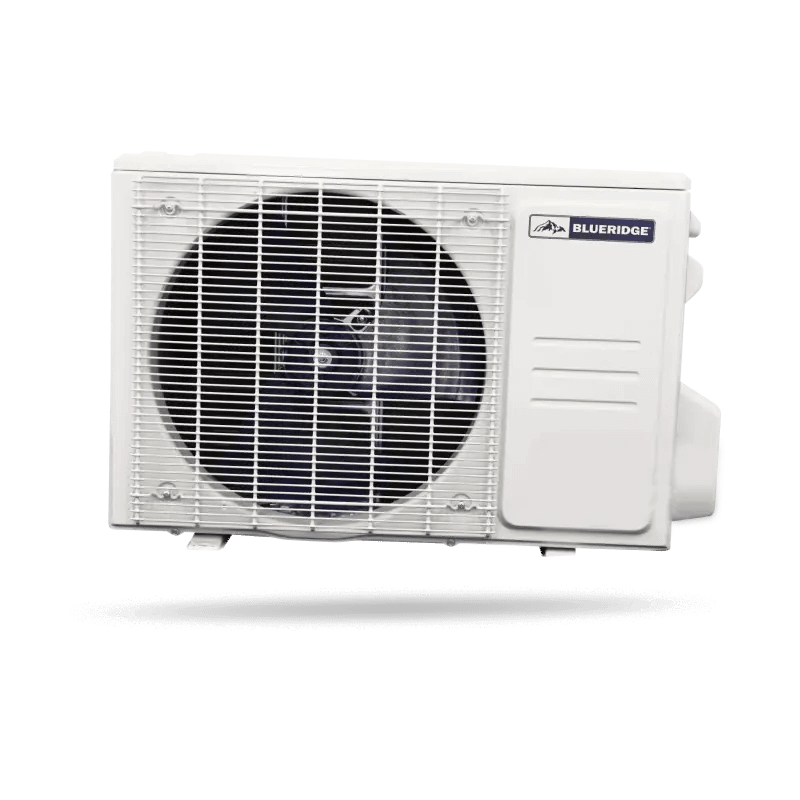
Indoor Unit: The indoor unit, also known as the air handler or evaporator unit, is positioned within the room or area you intend to condition. Its primary function is to distribute the conditioned air into the space. The indoor unit contains a fan, an evaporator coil, and often a filter.
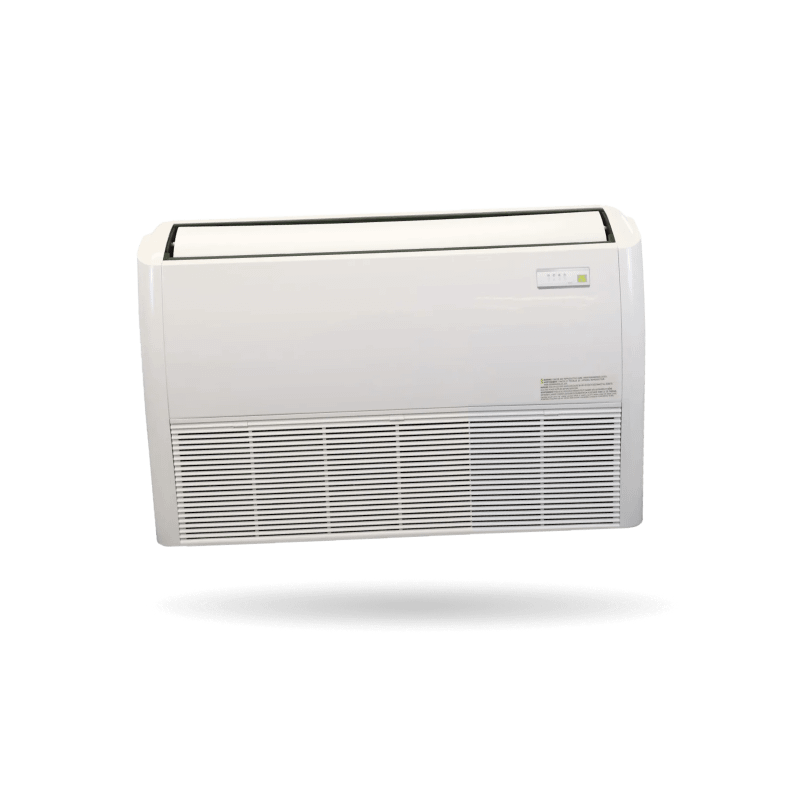
The indoor unit also features a filter that helps purify the air by trapping dust, allergens, and particles. This filtration process not only improves indoor air quality but also maintains the efficiency and cleanliness of the system.
These two units connect via refrigerant lines that circulate refrigerant between them. This refrigerant cycle is the heart of the mini-split system, allowing it to remove heat from one area and release it in another, thus providing both cooling and heating capabilities.
Cost to Install a Single-Zone Mini-Split: Three Options
Understanding the installation costs of a ductless AC system is essential for your budget. But before you can determine an amount, you’ll have to decide what type of installation will work best for you.
“What’s best for you” may have less to do with your budget, in this case, and more with your comfort level and skill set. Let’s look at your options for different types of ductless mini-split installations.
#1: Professional Installation
Having a professional HVAC contractor install your mini-split may sound the most expensive, but that isn’t always the case.

Depending on where you live and the complexity of your building space or mini-split system, hiring a licensed HVAC professional to install your entire mini-split air conditioner may be your best route.
Hiring professionals to install your single-zone mini-split ensures a smooth and efficient setup. They can also accurately assess your space and recommend the ideal unit size, potentially saving you money in the long term.
On the other hand, a professional will cost you more in terms of labor than if you do it yourself. And, if you are skilled at such projects, you are less likely to run into any unexpected issues along the way.
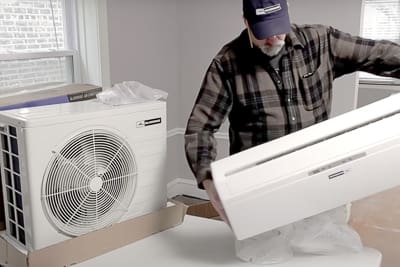
#2: Do-It-Yourself Installation
A do-it-yourself installation is popular among mini-split owners, particularly those with smaller units and straightforward spaces.
When you choose to DIY your ductless mini split air conditioner system, you can find plenty of how-to guides and installation instructions to help you along the way.
And, even though you will still want to at least consult with an electrician for the wiring component and consider an HVAC tech to pull a vacuum on your lines, a well-designed ductless mini-split system should be a relatively fun and rewarding project for seasoned DIYers.
#3: Complete DIY Mini Split Systems
With most mini-split heat pumps, you’ll require a technician for certain steps of the installation process, even if the person buying the unit is an avid do-it-yourselfer.
But with a true DIY ductless mini-split system like the Blueridge BMX9DIY20, the term “DIY” takes on a new level of independence.

With a DIY mini-split air conditioner, the outdoor unit or condenser already contains the correct amount of refrigerant, so you will not need a technician to fill it. The copper lines included are already under vacuum. These DIY units also have quick-connect fittings that maintain a vacuum until you’re ready to connect.
After you’ve installed the indoor and outdoor units, you screw together the quick-connect fittings, then open the valves to release the refrigerant. It’s that easy.
But the complete DIY mini-split system isn’t for everyone. Not only will you still need an electrician to ensure your electric panel and wiring are up to code, but some people don’t feel comfortable tackling the refrigerant lines and condenser setup. But a DIY single-zone mini-split system may be ideal for someone who enjoys doing an entire project independently.
Ongoing Operational Costs
Beyond your mini-split installation, it’s important to consider the ongoing operational costs associated with your single-zone mini-split system. Make sure you factor in things like:
Energy Consumption: Although mini-splits are highly energy efficient, you’ll still have monthly energy bills. However, these bills are often lower than those of traditional HVAC systems due to the precise temperature control.
Maintenance and Cleaning: Routine maintenance and cleaning are necessary to keep your system running smoothly. This includes cleaning or replacing filters, inspecting components, and ensuring proper airflow.
Potential Repairs: You may encounter repair or replacement costs for parts over the system’s lifespan. Proper maintenance can extend its life and reduce these costs.
Regardless of what route you decide to take with your ductless mini-split system installation, your associated costs will be contingent on your decisions and the complexity of your installation.
For a more in-depth understanding of the various ways to install a mini-split system, consider contacting an HVAC expert for advice.

What Factors Will Affect the Cost to Install a Single-Zone Mini-Split?
Along with the cost of the actual labor for your installation, several other factors influence the cost of installing your single-zone mini-split:
Geographical Location:
Installation costs for mini-splits can fluctuate significantly depending on where you live.
This variation is primarily due to differences in local market rates and the availability of HVAC professionals.
In regions with a higher cost of living, such as major cities, installation labor rates tend to be higher.

Conversely, you might find more budget-friendly installation costs in more rural areas or places with a lower cost of living.
Therefore, obtaining multiple quotes from local HVAC contractors is essential to get a clear picture of the cost landscape in your specific area. This geographical consideration can be a pivotal factor in determining your overall budget for the installation.
Complexity of Installation:
The complexity of the installation process is another vital factor influencing costs.
Unlike a central AC system, a ductless mini-split air conditioning system doesn’t need any ductwork to operate, thus significantly reducing the installation cost.
That said, even with the simplicity of a mini-split single-zone system, not all installation scenarios are created equal.

Factors like the type of walls in your home, the accessibility of installation points, and the layout of your space can impact the job’s complexity.
For example, installing a mini-split on an exterior wall with easy access to the outdoor unit might be relatively straightforward.
However, the installation can become more complex and time-consuming if your space requires access to tight spaces or specialized mounting due to unique architectural features. Complex installations often require more labor and can result in higher costs.
Discussing these specifics with your HVAC installer to get a precise estimate based on your home’s unique characteristics is crucial.
Seasonal Demand:
The time of year you choose for your mini split installation can significantly affect the overall cost. Seasonal demand plays a crucial role in pricing. HVAC contractors often experience higher demand during extreme weather seasons – the hottest and coldest months.
Contractors might charge premium rates during these peak periods due to increased workloads and service demand.

Consider scheduling your mini-split installation during the off-season to save on installation costs.
Planning your installation for the shoulder seasons, when demand is lower, can lead to more competitive pricing from HVAC professionals. Additionally, during the off-season, you might have more flexibility in scheduling your installation, allowing you to choose a convenient time for the work without the pressure of immediate weather-related concerns.
After You Install: Long-term Cost Savings on Your Single-Zone Mini-Split
When we discuss the installation costs of a ductless mini-split, we must consider one area of great savings: the long-term.
Mini-split systems are known for their exceptional longevity and energy efficiency.
Unlike traditional HVAC systems, which often require costly repairs and replacements over the years, mini splits are built to last.
You can expect a mini-split system to operate efficiently for many years with proper maintenance.
Let’s delve into each of these areas more.

Energy Savings Compared to Traditional HVAC Systems
Single-zone mini-splits are renowned for their energy efficiency. Unlike traditional HVAC systems, which often experience energy losses due to ductwork and centralized cooling, mini-splits deliver direct cooling and heating to the intended space.
This results in minimal energy wastage, translating to lower utility bills.
Over time, the energy savings can be substantial, helping you recoup the initial installation costs.

Extended Lifespan with Proper Maintenance
Mini-split systems are known for their durability and longevity when properly maintained.
Regular maintenance, such as cleaning filters and scheduling professional check-ups, can significantly extend the lifespan of your mini-split.
While traditional HVAC systems might require replacement after 15-20 years, a well-maintained mini-split can last 20-30 years.
This prolonged lifespan saves you money on premature replacements and enhances the overall return on investment of your mini-split system.

Increased Property Value with Modern HVAC Solutions
Investing in one of the best single-zone mini-split systems isn’t just about short-term comfort and savings; it’s also an investment in your property’s value.
Homebuyers and appraisers recognize the added value of modern HVAC solutions like mini-splits.
When it comes time to sell your home, having an energy-efficient HVAC system can make your property more appealing and potentially increase its market value.
Prospective buyers often see the benefits of mini-splits in terms of lower energy bills, zoned comfort, and modern, space-saving design.
While the initial cost to install a single-zone mini-split system may be something you need to budget for, the long-term savings and return on investment can be substantial.
These systems offer ongoing energy efficiency, extended lifespan with proper care, and a potential boost in property value. Indeed, they are a wise and financially sound choice for homeowners seeking comfort and financial prudence.
If a Mini-Split Installation is in Your Future, Then Count On Alpine to Be There
Understanding the comprehensive cost of installing a single-zone mini-split system in your home or workplace will take more than just figuring out the initial installation cost.
You will also want to think about ongoing operational expenses and long-term savings.
After working with property owners for over 20 years, Alpine Home Air is a trusted name in the HVAC industry.
Our dedicated HVAC experts can help you factor in all the costs associated with your single-zone mini-split install, regardless of how you choose to do it, where you live, or what types of unique challenges your property may pose.
If you’re ready to start the process of installing your new ductless mini-split air conditioner, give us a call today. Let Alpine join you on the path to ultimate comfort and cost savings with your successful mini-split installation.
